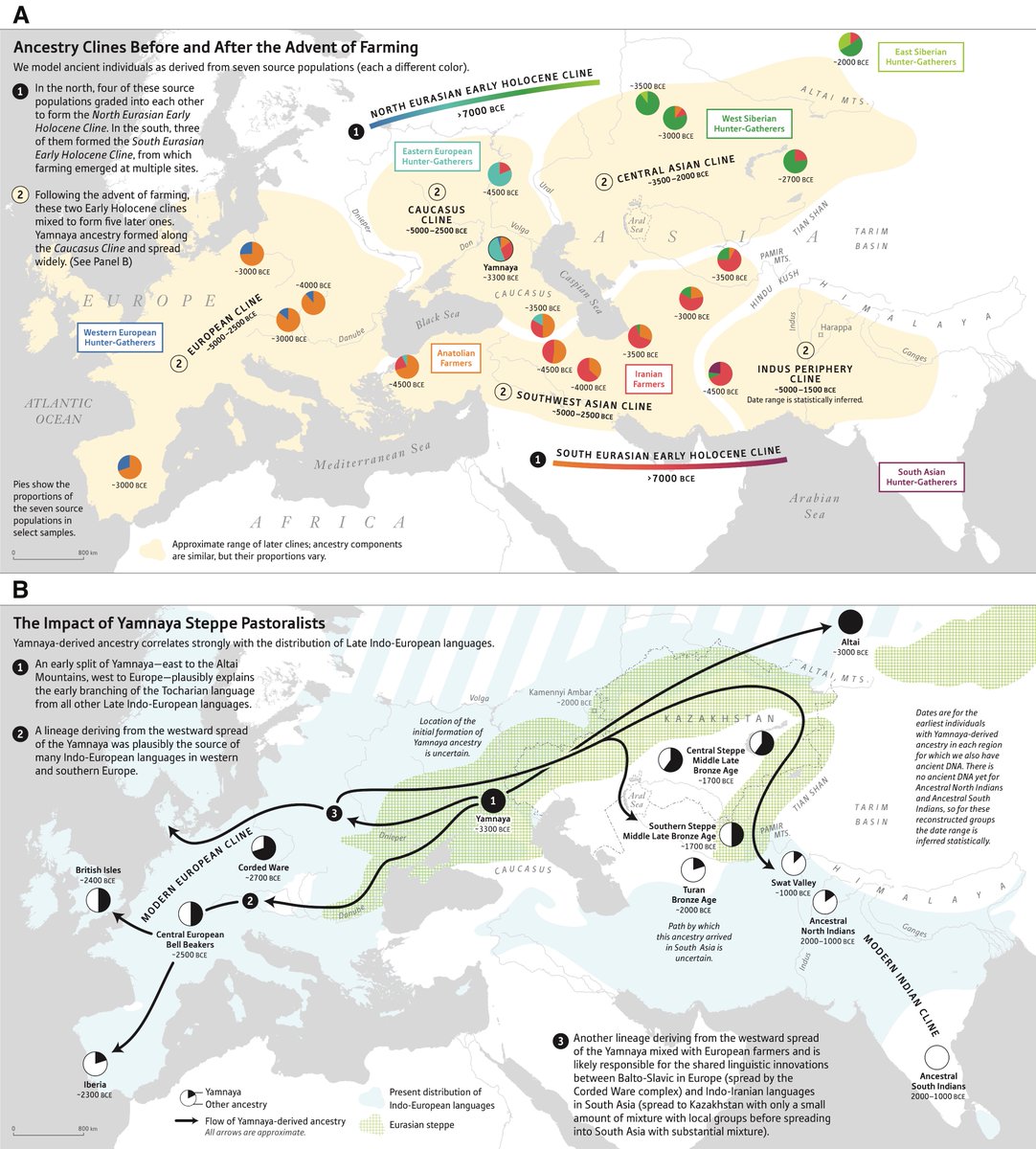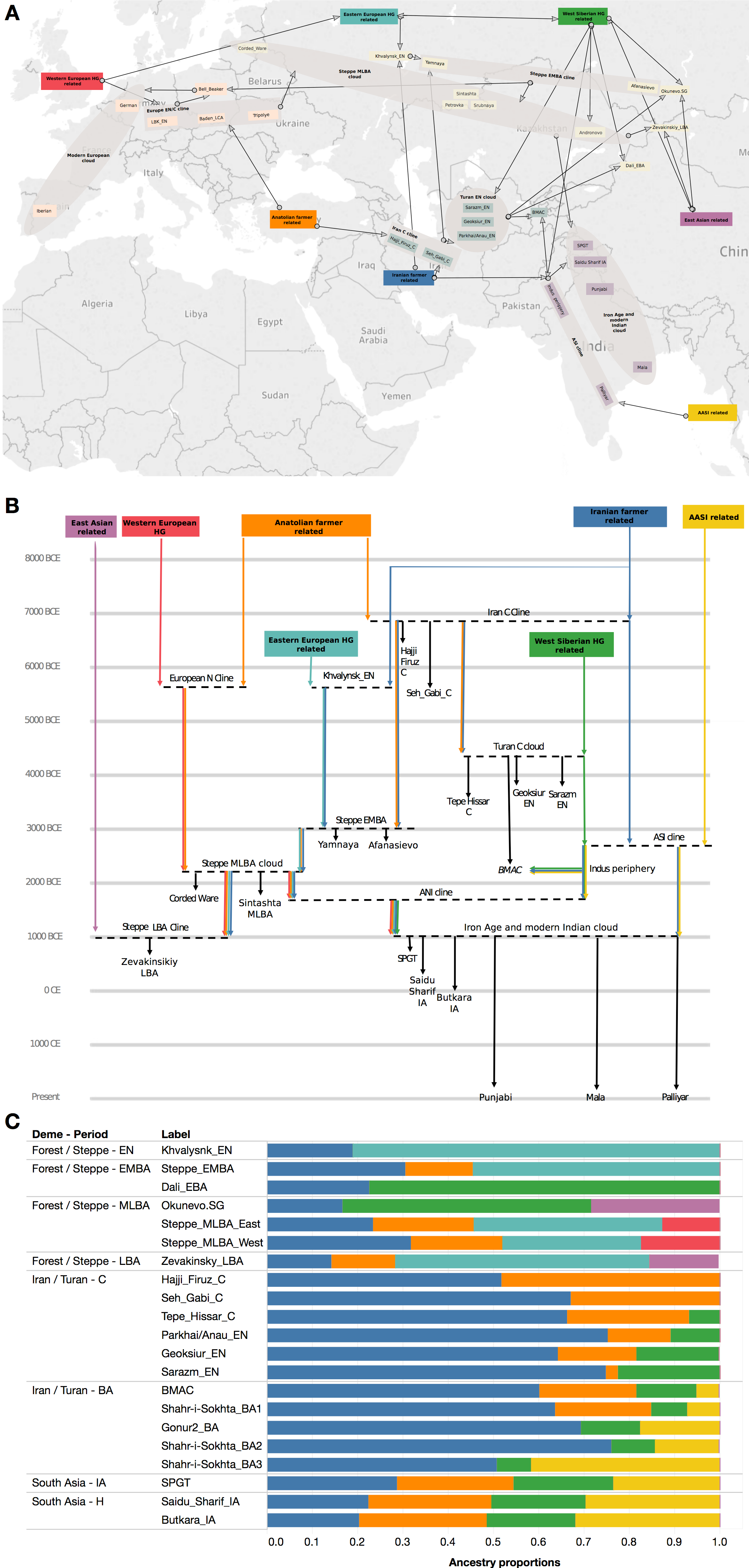So, the final paper, unlike original preprint, has samples from Kyrgyzstan. I thought that they would analyze Andronovo sites fro Arpa valley, instead they analyzed two guys from Aigyrjal:
Master ID Date: One of two formats. (Format 1) 95.4% CI calibrated radiocarbon age (Conventional Radiocarbon Age B, Lab number) e.g. 5983-5747 calBCE (6980±50 B B, Beta-226472). (Format 2) Archaeological context date B, e.g. 2500-1700 BCE Split Label (grouping individuals of similar ancestry by site) Location Country Sex mtDNA haplogroup Y chromosome haplogroup
I11526
2203-2041 calBCE (3735±20 BP, PSUAMS-4607) Aigyrzhal_BA Aigyrzhal Kyrgyzstan M R6a2 Q1a2
I11527
2114-1928 calBCE (3630±20 BP, PSUAMS-4750) Aigyrzhal_BA Aigyrzhal Kyrgyzstan M HV14 J2a1h2
It seems that they represent
pre-Andronov inhabitants of Kyrgyzstan. Interesting, because there is not very much known about them. One of the few papers dealing with that site:
https://www.sciencedirect.com/scienc...40618215006655
Associate authors:
Michael Frachetti, Egor Kitov, Gaziz Akhatov, Antonina Yermolayeva, Kubatbek Tabaldiev, Oroz A. Soltobaev, Temirlan T. Chargynov.




